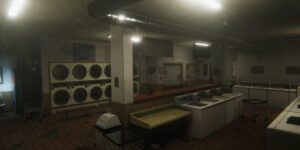Whether it’s the entry level PSVR, or a PC-powered behemoth like the Valve Index, gaming in VR can be a transcendental experience, putting you within a game rather than beyond it. As the sector has developed and grown, so too has the burgeoning array of attachments to enhance your experience. While many of them skew towards making your time with a funky hat on more comfortable, some are aiming to immerse you even further in the game worlds that you’re exploring.
The Woojer Vest Edge fits firmly in the second category, taking the form of a haptic-toting top that takes the audio output of your VR unit – or anything you’ve got to hand with Bluetooth or a 3.5mm connection – and turns it into thumping haptic pulses. The sales pitch would have you feel the beats, the explosions, or the gunfire as you’re pummelled by haptics. Can it actually improve your gaming experience though?
Coming in with a recommended retail value of £499 – though it’s currently available for £399 from the official website – it’s amongst the most expensive additions you’re going to find for your VR experience, dwarfing the entry cost of an Oculus Quest 2. However, it’s fair to say that if you’re interested in this item, which is a niche within a niche, you’re probably looking for the best experience as opposed to the best value for money.
The Woojer Vest Edge is quite a thing to behold. Arriving in a large, angular box, when you open it up you’re greeted by a unit that sits somewhere amongst the design floor sketches of The Division, Ready Player One, and the US Military. It’s a vision of the future that’s been tickling the edges of my memory, and is probably already immediately recognisable somewhere in London’s nightlife. Wherever it sits thematically, chronologically – or longitudinally – I like it.
The unit is mostly covered in different black fabrics, finished with bronze highlights and stitching. Each of the straps has a softer, webbed fabric with a substantial amount of padding that keeps them from becoming uncomfortable when you’ve pulled them tight. When the Vest Edge arrived it felt especially stiff, and a bit like wearing a fabric-covered board on my back, but it started to become more pliable the longer I spent with it, like wearing in a new pair of leather boots.
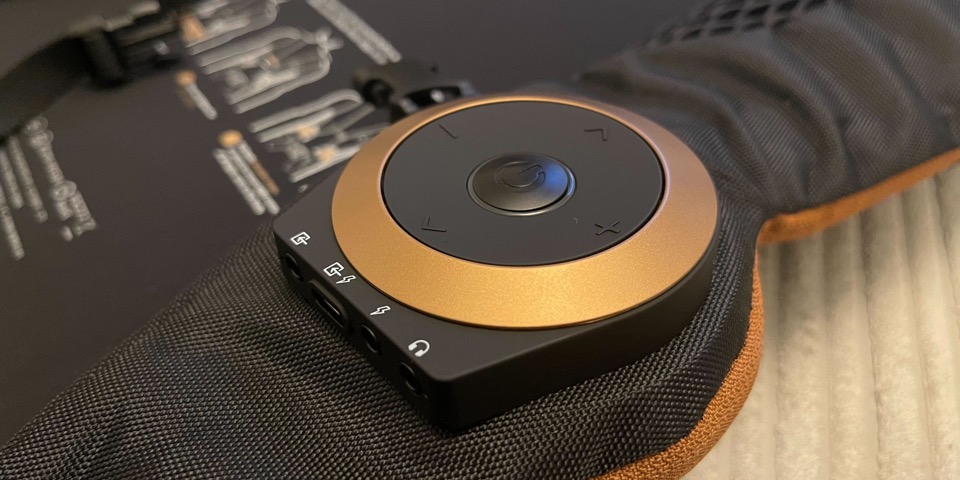
The controls are housed in a circular unit on the upper portion of the left strap, with the central button serving both power and pairing duties, while the outer ring give you control over the level of haptic response and the volume output from the Vest Edge’s headphone socket. You’ve got the option of either 3.5mm input – with the necessary cabling provided – or Bluetooth, and syncing it to your phone or PC is as simple as any of the myriad Bluetooth accessories you likely already own.
There’s six Osci haptic actuators tucked away in the Vest Edge. There’s two in the top of the back piece, two housed in the sides at your waist, and finally one in each of the straps. While there aren’t as many drivers here as there might be in some of the Vest Edge’s competitors, they’re placed at meaningful and useful points to make the provided sensations as enveloping as possible.
The Osci actuators are Woojer’s own technology, and they’re designed to operate silently, accurately replicating frequencies up to 200hz with a physical response. That’s low-end frequencies. While you’ll instantly be able to feel what they’re doing, you’re never able to hear it. It’s a great bit of engineering.
Once you’ve got over the fact that you look like an extra from a science fiction TV show – seriously, this has Stargate written all over it – then you’ll be ready to start feeling sound, rather than just hearing it. If you’ve got any lingering doubts about whether it’s really worth dressing up like a futuristic base jumper they’ll be swiftly pummelled into oblivion at about the point the haptics kick in.
I went with music first. I’m into Metalcore, Synthwave, and things with thudding bass lines, and these genres are about as good a match for the Vest Edge as you’ll get. The first time I listened to Bring Me The Horizon while strapped in, I was left with a lunatic grin that didn’t fade the further I delved into my musical library.
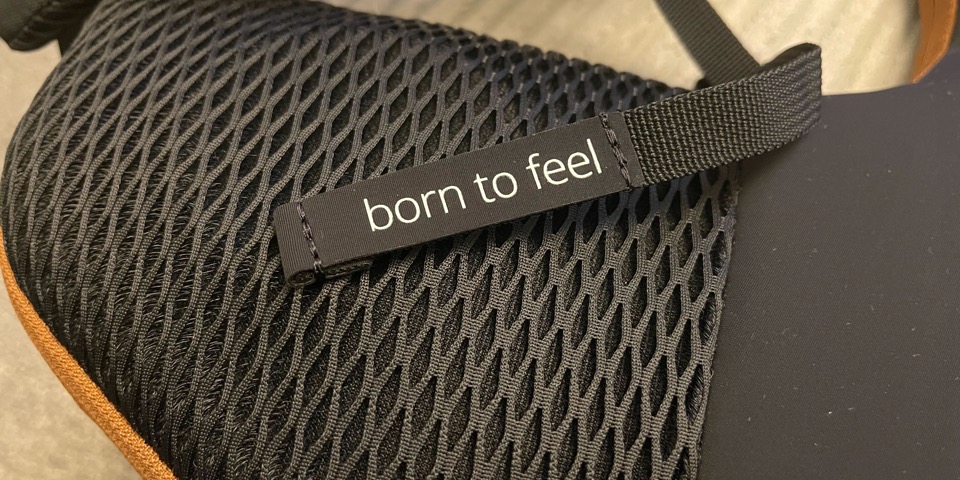
Whether it was Gunship and the pounding Drone Racing – the kick drum alone makes it worth checking out – or The Word Alive’s Quit While You’re Ahead, I adored listening to music in this way. It’s somewhere between being down the front at a gig and standing next to a bass bin in a nightclub, and if you’re a fan of music the Woojer Vest Edge brings it to life in a way you can’t easily replicate. If you’re a fan of classical music or 60s pop there’s going to be less of a draw, but if your taste skews towards the heavier end you’ll find it hard to go back.
I followed up my musical jaunts with some movie time. This was where I took my first foray into VR with the Vest Edge, and the set up on Oculus Quest 2 was swift and simple. Taking the 3.5mm feed from the Oculus into the Vest Edge’s control unit, you then attach your headphones in series before depositing them on your head. I worried that there’d be too many loose cables, but with some positioning under and around the Vest Edge there was never anything in the way, and nor did it restrict my movement.
You’re best served here with some powerful programming; I’m thinking more Michael Bay than Michael Moore. While you can have this set up for regular watching – it’s a cinch if you’re hooked into your DualSense or Xbox controller – VR viewing is categorically the way forward. If you’ve checked out apps like Prime Video VR or Bigscreen you’ll know that they put you in a virtual cinema, and watching blockbusters in VR can be pretty special. Adding in the Vest Edge tips things firmly into ‘nearly as good as the real thing’.
I opted for Spider-Man Homecoming as my first port of call, and things started out relatively subdued. I don’t think I’d spent much time thinking about how filmmakers tweak the sound mix to draw the audience in, but the lack of low frequencies in the opening was hammered home once they appeared, adding serious depth to both the soundtrack and the superhero action. I loved this; it’s absolutely like having your own cinema, and given that I’d paired the Vest Edge with Razer’s haptic-toting Nari Ultimate I was experiencing every blow, every blast, just like you would in a well-equipped movie theatre. No, wait. It’s better than that.
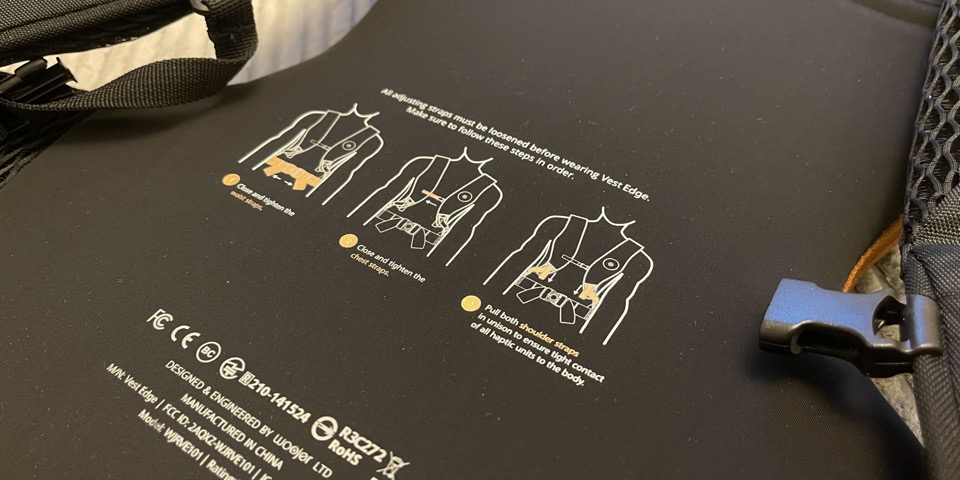
Of course it’s gaming where we’re probably most interested here. There is a smaller Woojer unit that’s a little more low-key, beefing up your music listening while you’re wandering the streets, but the Vest Edge’s best use case is at home and paired with a gaming setup. VR is similarly where most users will focus. You can wear it sitting down, and it’s absolutely comfortable enough to do so, but standing up in a VR landscape is where it makes the most sense.
I’ve spent the last few weeks trying it out with everything I’ve got loaded into my Oculus Quest 2, and quite simply, if you’re serious about VR gaming you should definitely consider adding a Vest Edge into your setup. It’s simple and straightforward to hook it into whatever you’re using, and while some games will benefit more than others, there’s an additional level of immersion here that you can’t recreate elsewhere.
Rhythm-action games are transformative. If you’re a fan of Beat Saber – and let’s face it, for many people Beat Saber is VR – then the thumping beats of each track turn that block-filled corridor into a Jedi nightclub lurking somewhere in the underbelly of Coruscant. It can take a little bit of getting used to, with rhythmic beats pulsing through your body, but you can alter the strength of the output directly from the Vest Edge’s controls to tailor it to whatever’s comfortable. Whether it’s Beat Saber, Synth Rider, or Avicii Invector, the Vest Edge is simply essential.
Once you’ve been clubbing you’ll likely need to chill out, but the Vest Edge isn’t all too interested in taking things easy. Just as it suits pounding music and explosive cinema, games with gunfire and explosions become more hugely involving, and that’s true whether you’re playing in 2D on your 50 inch TV, or lining up a shot in VR. I took some time to check out Uncharted: Legacy of Thieves Collection with the Vest Edge and I loved the extra weight in thuds of far-off explosions, or the depth the soaring soundtrack gained at crucial moments.
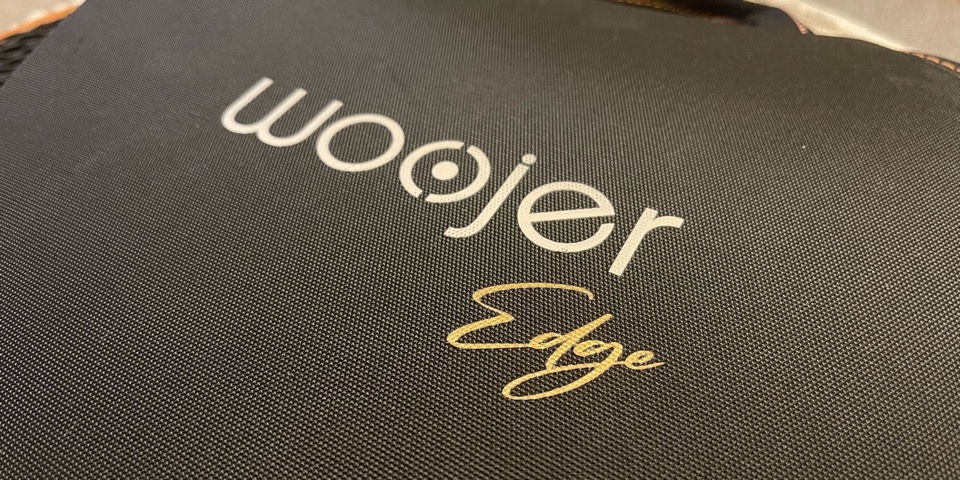
There is nuance to be found. One of my favourite moments was realising that I could feel the wind as it blew through my Quest 2 home space. Audio can ripple and rise, and work its way from left to right, drawing on the stereo input and turning it into something closer to a perceptible whisper than a thud. It’s certainly more understated, and it really does get you invested in how far VR has come.
The limitations of the system are the six points of haptic feedback, and the relatively simplistic way that the Vest Edge deals with audio. Something like the Bhaptics Tactsuit provides more points of contact, and has the potential to provide true VR immersion, but only if the game supports it. It’s also more expensive, and you’ll need a PC to get the most out of it.
The Vest Edge on the other hand works with pretty much anything that puts out audio, and its drivers can provide some serious force. You don’t gain the same level of directionality that the Tactsuit can give you, though. You’ll know you’re getting shot in the Vest Edge, but you won’t necessarily know whether it’s from the front or the back. Really, for the next iteration of this system, Woojer need to figure out how to offer the best of both worlds, letting you draw from music or more customised haptic feedback that’s built into games.
- Coinsmart. Europe’s Best Bitcoin and Crypto Exchange.
- Platoblockchain. Web3 Metaverse Intelligence. Knowledge Amplified. FREE ACCESS.
- CryptoHawk. Altcoin Radar. Free Trial.
- Source: https://www.thesixthaxis.com/2022/02/08/woojer-vest-edge-review-can-strapping-haptics-to-your-body-make-vr-more-immersive/
- "
- About
- accessories
- Action
- Additional
- Aiming
- All
- apps
- around
- audience
- audio
- available
- Bay
- beat saber
- BEST
- bigscreen
- Bit
- Black
- bluetooth
- board
- body
- Boots
- Box
- cables
- call
- case
- checking
- cinema
- closer
- collection
- competitors
- controller
- Deals
- depositing
- Design
- developed
- DID
- different
- down
- Drone
- Edge
- Engineering
- enhance
- essential
- expensive
- experience
- fabric
- Face
- fair
- feedback
- Fiction
- Figure
- Finally
- First
- first time
- Focus
- form
- Forward
- future
- game
- Games
- Gaming
- good
- great
- haptics
- having
- head
- headphones
- here
- Home
- How
- How To
- HTTPS
- i
- immersion
- immersive
- improve
- index
- IT
- Jedi
- large
- Level
- Library
- Listening
- Making
- Match
- Military
- money
- more
- movie
- Music
- Niche
- Oculus
- Oculus Quest
- oculus quest 2
- offer
- official
- open
- Option
- Other
- PC
- People
- physical
- player
- Playing
- potential
- power
- powerful
- Prime Video
- Programming
- psvr
- quest
- racing
- RE
- ready player one
- recommended
- response
- retail
- review
- Ring
- Ripple
- rise
- s
- saber
- sales
- Science
- science fiction
- Sector
- sense
- Series
- serving
- set
- Simple
- SIX
- smaller
- So
- Space
- start
- started
- straightforward
- superhero
- Supports
- SWIFT
- system
- Technology
- The
- theatre
- Thinking
- Through
- time
- tips
- top
- track
- tv
- us
- US military
- users
- value
- valve
- Valve Index
- Video
- Virtual
- vision
- volume
- vr
- VR Gaming
- wait
- Website
- What
- Whisper
- wind
- within
- Work
- works
- worth
- xbox
- youtube







